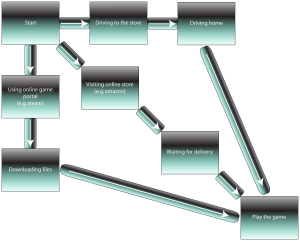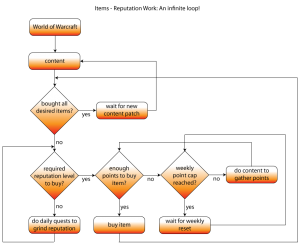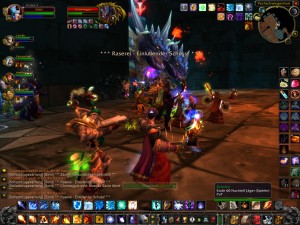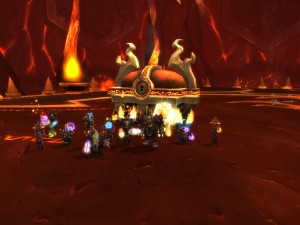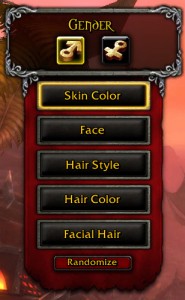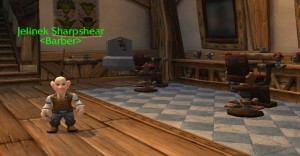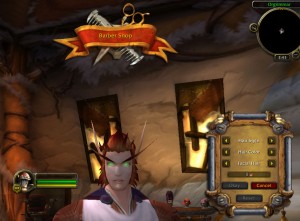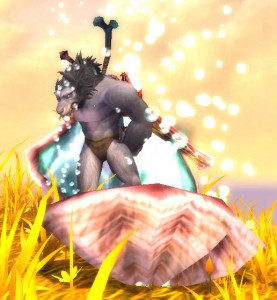Game spectatorship
During my ongoing literature review I often discover interesting facts about things I’ve never thought about. Sometimes I can connect these facts with my own observations: The result is mostly a completely new idea why things are as they are. Maybe these ideas are new to you, too. Therefore I’ll share my new science based knowledge with you!
This week: This week is the beginning of a video game / e-sport spectator series. Over the next weeks, I’ll focus on video game spectatorship.
I read the article „Starcraft from the Stands: Understanding the Game Spectator“ [1]. The authors analyze and define the spectatorship of video games. At first they define the game spectator by analyzing different approaches of spectating. Additionally, they analyze the other stakeholders like commentators and the players itself. They also figure out what makes a computer game fun to watch. For that purpose, they’ve focussed on the spectatorship of StarCraft and StarCraft2.
This „finding of the week“ offers some basic definitions of video game spectatorship and gives a general overview about different approaches of spectating a video game.
Cheung and Huang define a spectator as a person who follows the in-game experience, but does not actively play the game. Instead the spectator’s intensions range from watching the game casually to being highly interested in competitive gameplay.[1]
Ways of spectating the game
Spectating a game can happen in four different ways:
- Using a spectator mode
- Watching over the player’s shoulder
- Watching live broadcasts
- Watching recorded player videos
Spectator mode is a directly implemented tool in the game itself. It allows the player to join a game without having any influence on it. The spectator mode allows the spectator to watch over the actions of the players.
Spectator personas
During their research, Cheung and Huang identified nine different spectator personas[1], which are mostly distinguished by their knowledge about the particular game.
The first one is the bystander, who has no specific knowledge about the game. For the bystander, most of the gameplay is incomprehensible due to the lack of specific knowledge.
The curious has already some basic knowledge about the game. A curious spectator is very excited about the gameplay and tries to close knowledge-gaps by watching the game.
The inspired has deep knowledge about the game and gets excited by watching it. After spectating, inspired spectators desire to play the game themselves.
The pupil is an active player of the game and tries to gain some additional knowledge and new tactics by spectating others.
The unsatisfied would rather play the game than watching over the player’s shoulder.
The entertained likes just to watch the gameplay instead to actively play the game. In this case, spectating is nothing else than entertainment.
The assistant is mostly sitting next to the player and tries to support the player during gameplay.
The commentator is spectating and commentating the gameplay. This happens mostly during live broadcasts of tournaments.
The crowd describes the entertaining aspects of watching games in a group.
Spectating is fun
The enjoyment of spectating derives on the one side from the „information asymmetry“[1]. Information asymmetry evolves if the player or the spectator has an information advantage over the other one. At the beginning of a new game, the spectator is unaware of the player’s strategy. Over time the spectator will catch up and has the same knowledge as the player. Although the player and the spectator do have the same information, the information asymmetry will still remain active because it’s uncertain how the game will end: It depends on luck and skill of the players.
Sometimes the spectator even has an information advantage over the player. This can happen if the spectator is able to watch the game developing from the point of view of both players. In this case, the spectator has information about the situation that the players don’t.
As the game progresses, the information asymmetry will be cleared.
On the other side, the entertainment of spectating derives from suspense. Suspense is created by the uncertainty of the strategies and other skill-based events of the game. A player can have a comeback or survive a heavy ambush without too many losses.
Both, information asymmetry and suspense, lead to the entertainment of spectating video games. Therefore, games which can create situations that result in information asymmetry or suspense are fun to spectate.
Next week, I’ll focus on some of the spectator personas. Additionally, I’ll give an overview about other possible reasons why spectating games attracts gaming interested people.
[1] Cheung, Gifford; Huang, Jeff (2011): Starcraft from the stands: understanding the game spectator, in: CHI 2011 Proceedings of the 2011 annual conference on Human factors in computing systems, pp. 763 – 772.
